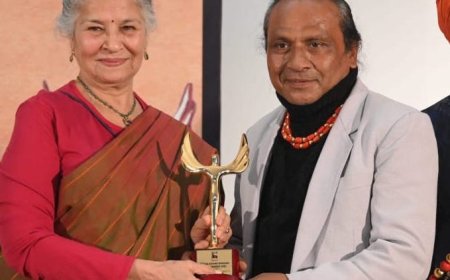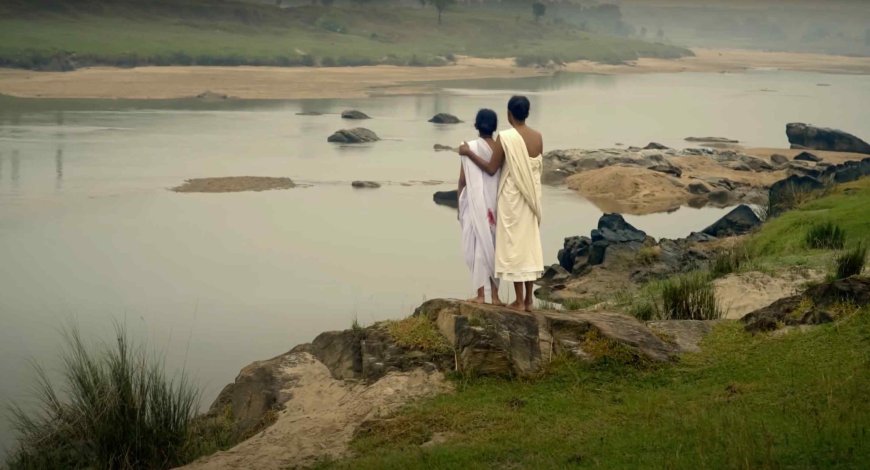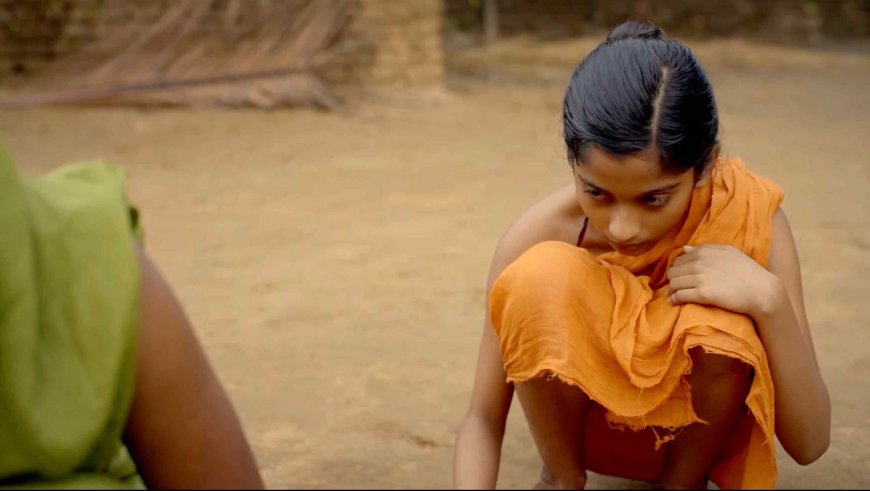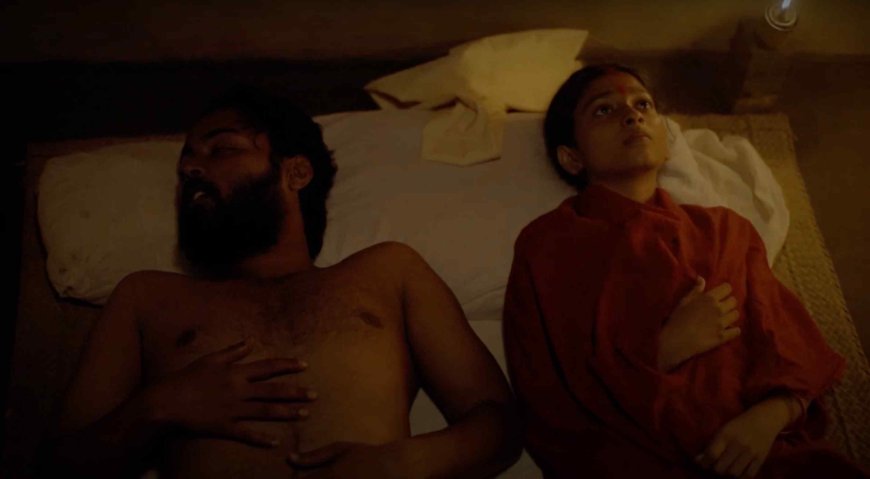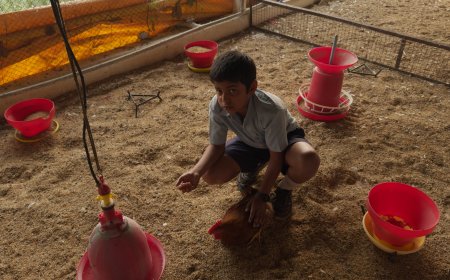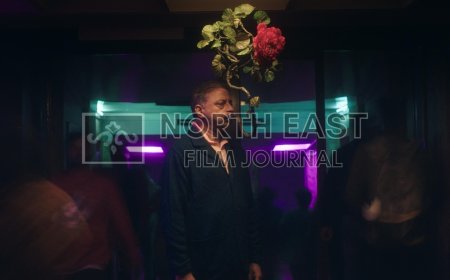Interview: Anuparna Roy talks about her debut short film Run to The River (2023)
Dipankar Sarkar interviewed Anuparna Roy and talks about her debut short film Run to The River (2023)
Run to The River (2023) narrates the heartbreaking story of innocence unravelling amid life's harsh realities in the impoverished backdrop of British Bengal. Pakhi (Tinni Roy), from a modest background, befriends Khandi (Poonam Saha), a widow navigating life's challenges. Pakhi's parents (Uma Banerjee and Buraaj) face insurmountable struggles, leading them to make a drastic decision - marrying their underage daughter. Tragically, Pakhi's dreams are shattered as she becomes entangled in a fate she had never anticipated. Introduced to literature as a child, Roy was captivated by its understanding of human behaviour. After choosing English literature post-12th, she later embraced world cinema. Working in a call centre, she developed the script for Run to The River and contributed an article on refugee lives and NRC impact, published by Rohit Gandhi on Wion. Saving money from 2017 to 2020 through moonlighting in various organizations, she formed connections with her film crew. Focused on Third World Cinema she developed a story dear to her heart, drawing inspiration from Jaya Chatterjee's book on British Bengal. Despite language differences, she shot the film in her village, infused with indigenousness.
How did you come up with the idea of writing a screenplay about a young girl from the marginalized communities of British Bengal, who harbours a dream to catch a glimpse of the river at least once in her life?
The idea of writing this screenplay emerged organically. As a child, my nani (grandmother) used to tell me a single story about the river, fascinating me with its beauty, flow, purity, and soul-freeing qualities. She promised to take me there, but upon her death, I learned she had never seen a river; her dead body was taken there for the last ritual. Married at nine and widowed at 40, she was confined by the patriarchal system and never allowed to experience something mesmerizing, like a river. This revelation deeply affected me, and I developed the story with a fictional touch. Despite being part of a privileged family in our village, I disliked casteism. After studying British Bengal, I crafted the story of Pakhi, a girl from a downtrodden society whose dream is to see a river, mirroring my nani's unfulfilled wish. Her marriage at nine to my 26-year-old nana reflects the societal norms of the time.
Further research unveiled the varied politics in the provinces, where the fight against the British was often about gaining power, dominated by the elite. My film doesn't convey sympathy for the political situation of India then, nor does it exaggerate nationalism. Instead, it mocks communism, fascism, and the Poona Pact as a sympathetic yet inorganic gesture by Mr Gandhi, imposed after numerous requests by Ambedkar Sahab. The conditions set by Gandhi for minority political power were impossible for them to fulfil, raising questions about the legitimacy of the system. Despite farmers being the major economic contributors, they never received their rightful rights.
In the scene where Zamindar is reading a newspaper, the headline: “Aren’t we the integral part of the society?” is symbolic enough to contrast the scene where Pakhi and her mother come to ask for their portion of rice and get mocked by Zamindar. If one can notice I tried showcasing in one single scene where Zamindar’s dhoti is over-patched with blue indigo, a symbol of capitalism and adaptation of British culture and as we know Indigo had a bizarre history of suppression. In the wide scene where Pakhi and her mother walk on the road, I chose them to take a long walk on the mud road and then they slowly change their path, as they were not allowed to walk on their road, the ultimate discrimination.
Despite all these, I chose to stay with my protagonist, who is a little girl and her journey of seeing the river while becoming a woman. As a woman filmmaker, I stood by my gender, which is suppressed, ignored, and manipulated by society, thus my theme has womanly images and layers of suppression. In my film, everyone is a victim of suppression and power.
Is Pakhi's husband's involvement in the peasant revolt against an exploited landlord rooted in deep concern or he has been manipulated to commit the crime?
Answering this question would be: His genuine concern for freedom conflicted with his economic and societal circumstances, leading him to work as a pawn for a wealthy capitalist, Burah, a liquor seller exploiting the Poona Pact. Recognizing the opportunity to participate in elections, all he needed was land to manipulate these freedom fighters. As I mentioned, it involved layers of suppression and power dynamics. Despite being from a downtrodden society, the liquor seller, who had become a Namasudra Brahmin, served the Babus, while Pakhi's husband served Burah. The chain of influence continued to widen. Thus, he became an unwitting victim of customs, society, power dynamics, and patriarchal structures.
Could you discuss the significance of the scene where Pakhi's husband is having a conversation while she is busy catching a flock of hens?
The specific shot aimed to depict Pakhi's life in her in-law's house, emphasizing her possession of innocent ducks. This scene holds significance as it contrasts her harsh treatment of caging the ducks with her previous gentle act of crafting clay ducks in her own home. Notably, while this unfolds, her husband's dialogues indicate his complete agreement with Burah and his political ideology, serving as another symbol of indirect captivity.
What were the challenges you faced during the making of the film?
The initial challenge was financial, as I juggled a corporate job to fund the film, facing resistance due to the unconventional nature of Third World Cinema. Convincing my family was a significant hurdle. To address the lack of funds for lights, we crafted makeshift torches (mashals) collectively, with an unpaid crew dedicated to the film. Initially met with resistance, we eventually persuaded the people in my village to cooperate with us.
Can you provide insight into the casting of the actors?
Some cast members, including Pakhi, her in-laws, her father, and Karim, were selected from villagers, while others were chosen through auditions in Kolkata. To involve the local community and provide paid opportunities, I aimed to capture their natural expressions, leveraging their familiarity with the language.
How does your short film relate to the current societal structure?
My answer would be yes; it's entirely relatable to the current scenario. The position of women is still subject to manipulation, often perpetrated by the government itself. For instance, initiatives like Kanyashree, which legalizes women getting married at the age of 18, may seem ironic. Encouraging marriage through financial incentives can be seen as another form of government manipulation. While the age of 18 is deemed justified, it does not prohibit child marriage; rather, it is a determined and hypocritical decision. My personal belief that the personal is political thrives in my role as a woman filmmaker.
What are you planning to do next?
I have completed shooting my feature film, The White Ghost in Mumbai without a producer. By working in the corporate sector, I managed to fund the project myself. My filmmaking vision revolves around creating women-centric films that reject the male gaze. I aim to tell stories deeply connected to my own life, ensuring that my narratives reflect my personal experiences and perspectives.
What's Your Reaction?





































